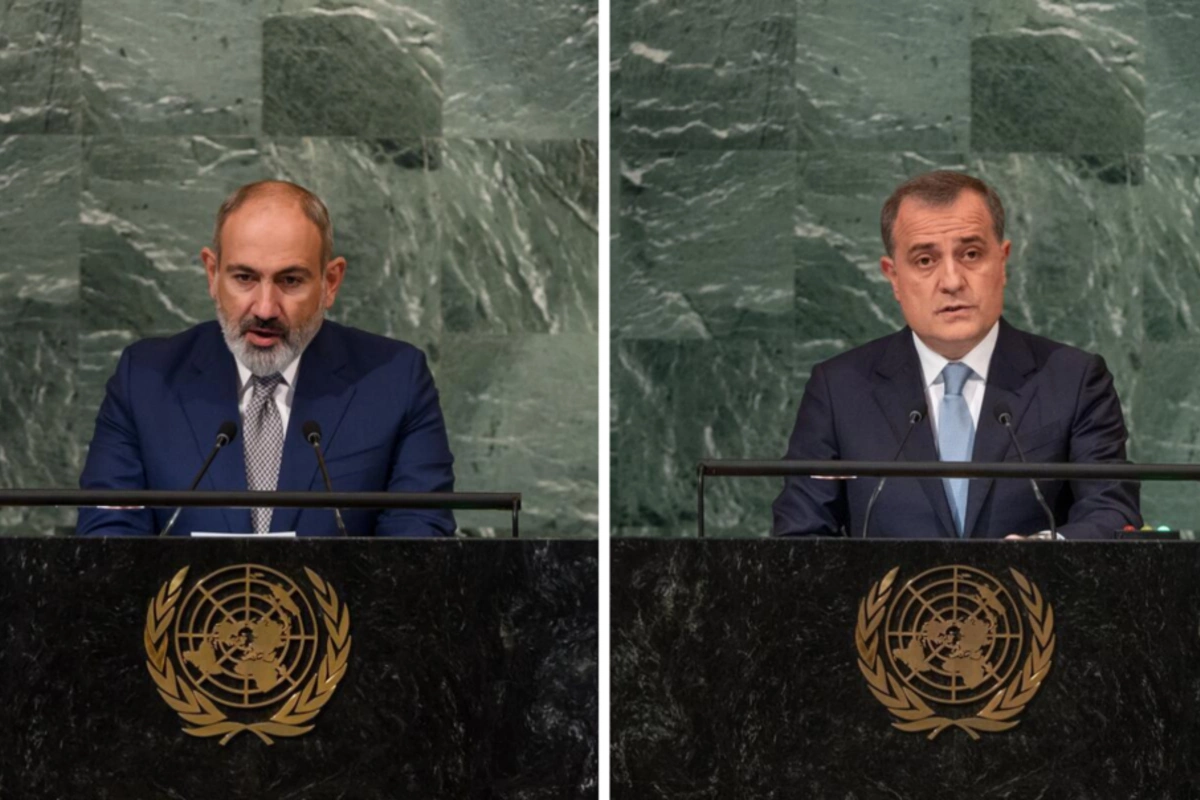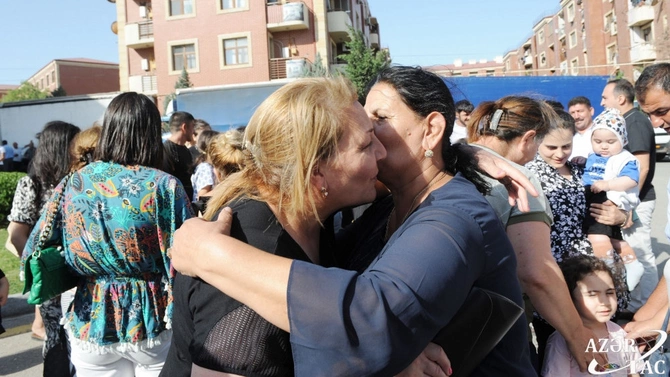
September’s re-ignition of conflict between Azerbaijan and Armenia has set forth a flurry of international diplomacy. What’s going on and why?
Image: General Assembly of the United Nations
September 27 was the second anniversary of the day in 2020 that the 2nd Karabakh War began. After a thorough but measured Azerbaijani victory, the war ended 44 days later with a tripartite agreement (Armenia-Azerbaijan-Russia) which was supposed to lead, over time, to a more fully negotiated peace. Tragically, two years on, the conflict has been bubbling up again – especially since May – with the worst fighting in recent weeks leaving nearly 300 dead.
Armenian reports show damage to infrastructure well inside Armenia, including shell damage to the tourist resort of Jermuk, whose popular chair-lift system was damaged. Armenia has complained bitterly of incursions across the presumed Azerbaijan-Armenia border. Baku has claimed its moves can be justified due to the undelimited nature of that border – a delimitation which both sides claim they want to be settled as soon as possible – yet both sides blame the other for not implementing.
International leaders, seeing the death toll, have been scrambling to find a solution. Armenia’s Prime Minister Nikol Pashinyan made an impassioned speech to the UN General Assembly on September 22nd, berating Baku for what he claimed to be “territorial claims against Armenia” and “that Azerbaijan violates the ceasefire every day.” Earlier in September, US Speaker Nancy Pelosi made what she called ‘almost a family visit’ to Yerevan. After Pashinyan’s visit to New York, he proceeded to Paris for meetings with French President Emmanuel Macron – currently acting head of the UN Security Council – who diplomatically supported Pashinyan’s “position to do everything to establish peace.”
From Azerbaijan’s point of view, however, Armenia’s approach to full peace negotiations has been one of “imitation” rather than substantive talks followed by a series of “provocations”. Two days after Pashinyan’s UN speech, Azerbaijan’s Foreign Minister Jeyhun Bayramov told the General Assembly that “Armenia has to constructively engage in the ongoing normalization process in order to establish a predictable, stable situation in the region through the establishment of good-neighbourly relations” but that he was confident that now was a “watershed moment.”
Pashinyan has stated that his “unequivocal” position is that “Azerbaijani armed forces must withdraw from the sovereign territory of Armenia.” However, as seen by most impartial observers, Azerbaijan has no real desire to encroach long-term on Armenian territory. More likely, Baku is determined to speed up compliance with what Azerbaijan sees as Yerevan’s duties under the 2020 agreement – both on demining and especially on facilitating a viable ‘Zangezur transport corridor’ to Nakhchivan. Whatever the so-called ‘Armenian provocations’ that might have been uncovered, analysts see it likely that Baku’s reaction is offering a forceful reminder that the military power is in their hands. Given Russia’s distraction in Ukraine, they are in a

What often seems to be lacking is a mechanism to allow face-saving measures for leaders on either side to make peace. Pashinyan is in a particularly difficult situation, understanding the need to make a lasting peace settlement for the sake of his country’s economic recovery yet under intense pressure not to compromise over Karabakh Armenians. However, subtle signs of hope remain. An interesting yet relatively little discussed feature of his independence message on September 21 was a call to reaffirm sovereignty and independence in the 29 thousand 800 square kilometre State-Motherland, an area that does not include Karabakh. And on September 28, the US White House hosted a meeting between Azerbaijan’s presidential aide, Hikmet Hajiyev, and Armenia’s Security Council Secretary, Armen Grigoryan.
The 44-day war ended with Azerbaijan poised to retake the entire swathe of its sovereign territories that Armenia had occupied since the 1990s. However, whether due to Russian insistence or humanitarian decency, Baku stopped short of ‘finishing the job.’ The result was a ceasefire agreement that left a core part of what had once been the Nagorno-Karabakh Autonomous Oblast (NKAO) in Soviet days in a kind of geopolitical limbo. The Armenians living in an area roughly equivalent to the NKAO (plus a whole surrounding expanse of occupied and depopulated Karabakh that had previously been undisputedly Azerbaijan) declared themselves as masters of an entity that styled itself as an independent Armenian republic (known abroad somewhat inexactly as Nagorno Karabakh). However, it was never officially recognized, and lines were so blurred that two of its politicians went on to rule Armenia proper. Armenians call this entity Artsakh, while Azerbaijan refuses to name it or to guarantee any special status for the area any more than it offers special status for the Lezgi, Talysh or Avar regions of Azerbaijan. The end of the 2020 war put Russian peacekeeping troops on the ground to allow the Armenians of Karabakh an assurance of safety. Meanwhile, in principle, Armenia and Azerbaijan were meant to sort out a full peace treaty that would ensure prosperity and mutual respect between the previously sworn enemy populations and allow the return of hundreds of thousands of Azerbaijanis to the homes they lost in the 1990s.

Former Azerbaijani IDPs and residents return to de-occupied Aghali, Zangilan. Image: azertag.az
Not surprisingly, this has been fraught with political difficulties.
From a common Armenian perspective, Azerbaijanis are conflated with Turks in an emotional imagination that still sees the spectre of the appalling massacres and deportations of Armenians from Anatolia in 1915 and projects such fears upon Turkic neighbours over a century later. There is also a more recent memory of the tit-for-tat killings and ethnic cleansing cycle that ramped up during the 1990s, for which both Azerbaijanis and Armenians see the other as being to blame. And perhaps over the last almost 30 years, Armenia’s self-image as a victor in the 1st Karabakh War led to a sense of denial that undermined any political attempts to negotiate from a position of strength despite the efforts of Armenian statesmen-academics like Gerard Libaridian. For Azerbaijan, Armenia’s complaints about what could be deemed minor and temporary border incursions – masked under the cloak of border delimitation ambiguities - are rich, coming from a country that for decades occupied over 16% of Azerbaijan’s territory. Baku is, temporarily at least, in a position of strength both militarily but also geopolitically, offering the EU help in its looming gas crisis while playing a cautious yet confident hand with Russia during Moscow’s difficulties in Ukraine.
For a very well-explained explanation of the broad geopolitical brush strokes underpinning the recent renewed outbreaks of fighting, a very useful overview is provided by Professor James Ker-Lindsay

Share on social media